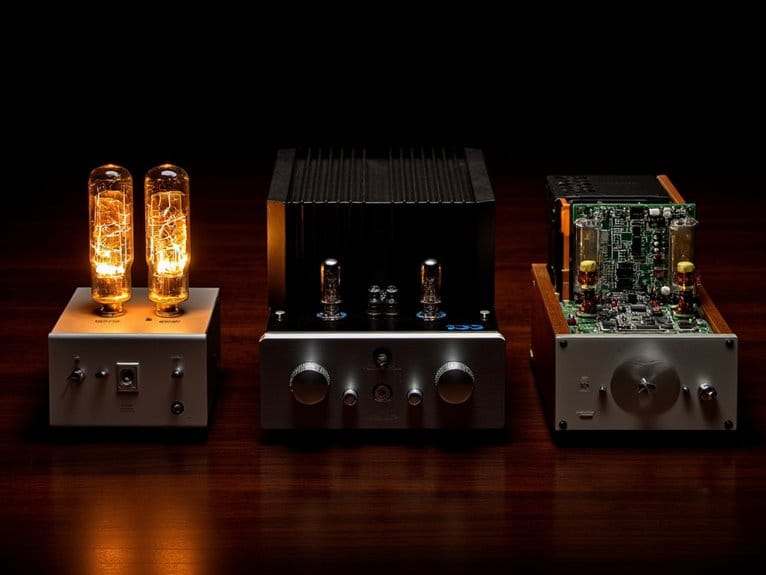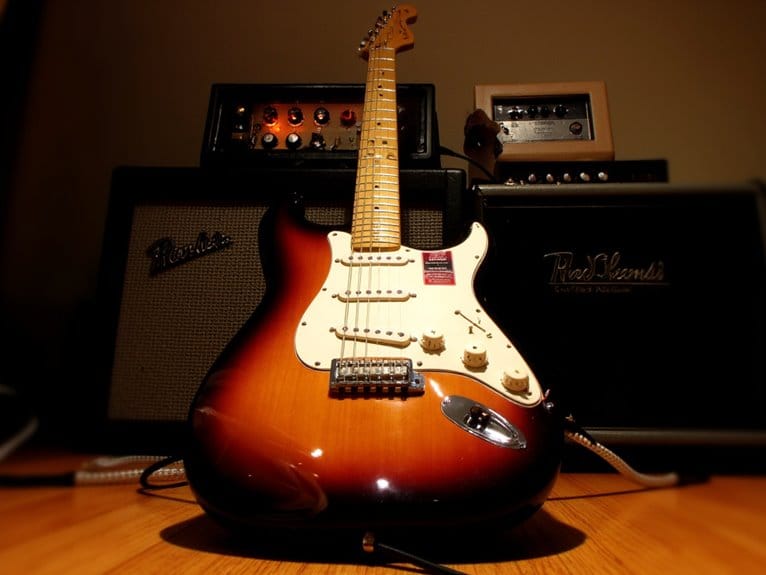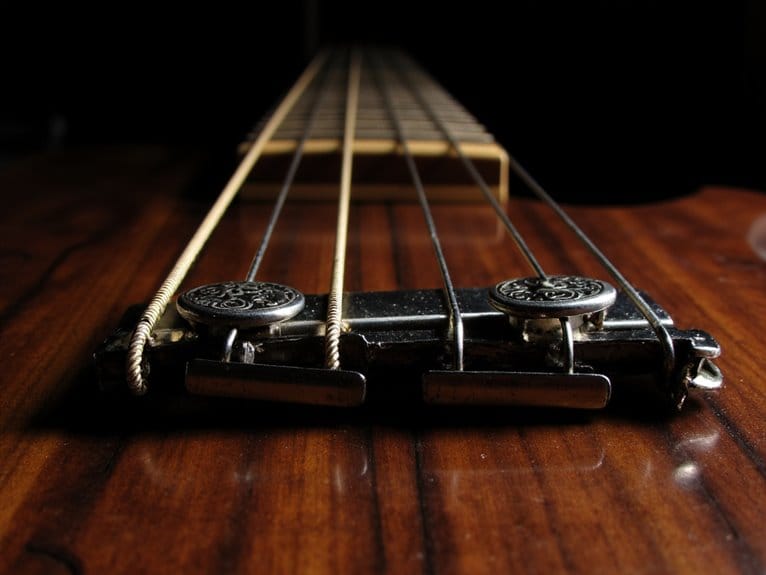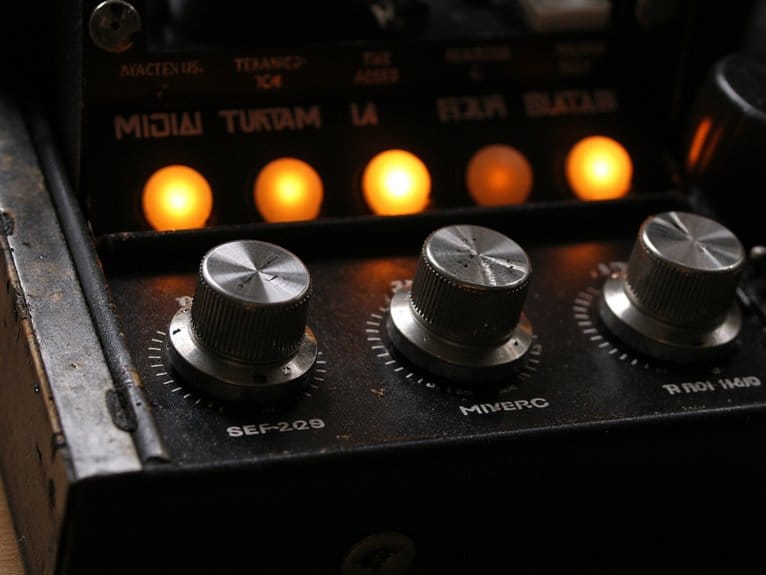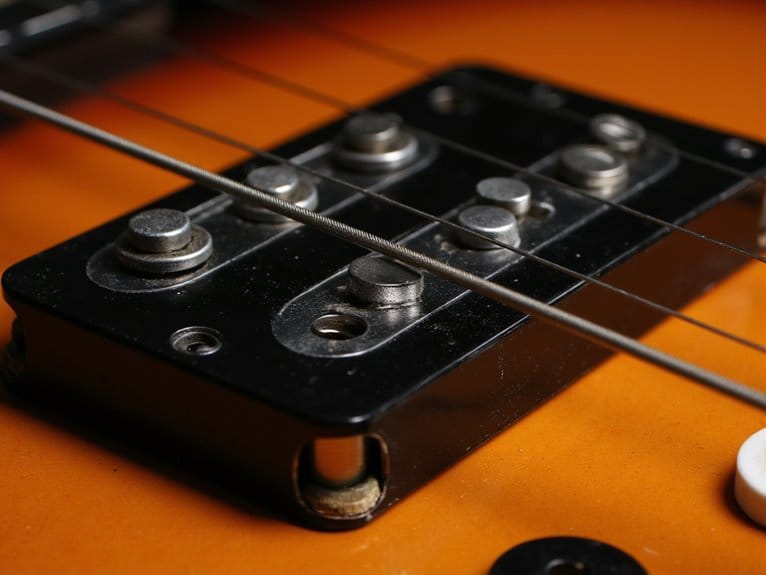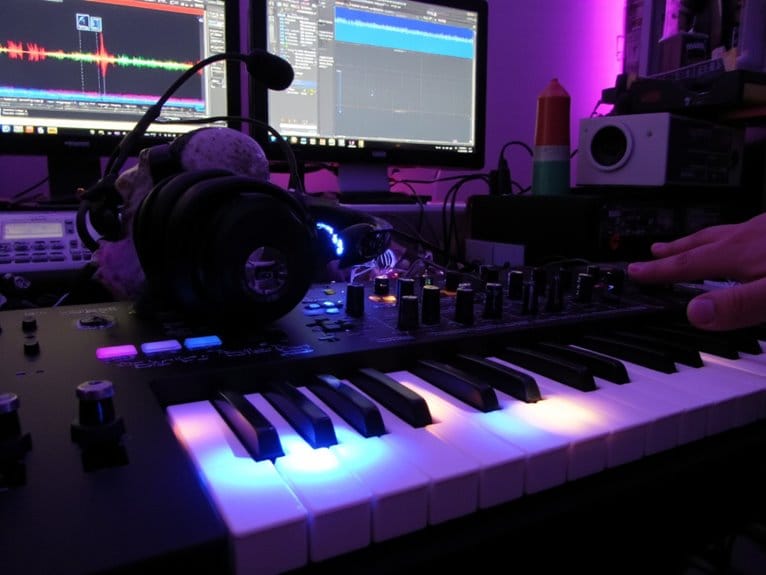Understanding Amp Classes: A, AB, and D Explained
Class A amplifiers deliver exceptional audio fidelity by conducting continuously, though they’re inefficient at 20-30% and generate significant heat. Class AB designs balance performance and efficiency around 60% through push-pull configurations, making them versatile for home theater and consumer applications. Class D amplifiers use pulse width modulation switching to achieve over 90% efficiency with minimal heat, perfect for portable devices but requiring output filters for quality. Understanding these trade-offs helps you match amplifier characteristics to your specific audio needs and discover which design philosophy best serves your listening environment.
We are supported by our audience. When you purchase through links on our site, we may earn an affiliate commission, at no extra cost for you. Learn more.
Notable Insights
- Class A amplifiers conduct continuously with exceptional audio fidelity but suffer from poor 20-30% efficiency and significant heat generation.
- Class AB amplifiers use push-pull configurations achieving 50-78% efficiency while balancing sound quality and power consumption for versatile applications.
- Class D amplifiers utilize pulse width modulation switching to achieve over 90% efficiency with compact, lightweight designs ideal for portable devices.
- Class A excels in critical listening applications, Class AB suits home theater systems, and Class D dominates battery-powered portable equipment.
- Efficiency differences create distinct thermal management requirements, with Class A needing substantial cooling and Class D generating minimal heat.
How Each Amplifier Class Works and Their Key Characteristics
When I first started diving into amplifier technology, I’ll admit the different classes seemed like alphabet soup designed to confuse anyone who wasn’t an electrical engineer.
Here’s what actually matters: Class A amplifiers keep their output transistors conducting continuously throughout the entire signal cycle, delivering exceptional audio fidelity but requiring extensive thermal management due to their 20-30% efficiency.
Class AB designs blend the best of both worlds, conducting more than half the cycle while achieving 50-78% efficiency through push-pull configurations.
Class D amplifiers use pulse width modulation, switching transistors fully on or off like digital switches, reaching over 90% efficiency with minimal heat generation, though they require output filters to maintain sound quality.
Efficiency and Performance Comparisons Between Class A, AB, and D
While I’d understood the operational differences between amplifier classes, seeing the actual performance numbers laid out side-by-side truly highlighted why each design has carved out its own market niche.
The efficiency gaps between these classes are frankly staggering, with Class A struggling at 20-30% efficiency while Class D rockets past 90%, fundamentally tripling the power conservation.
You’ll find Class AB sitting comfortably in the middle around 60%, which explains its popularity in home audio systems.
These performance metrics directly translate to real-world implications: Class A demands massive heat sinks and weighs considerably more, Class D fits into compact portable devices, and Class AB strikes that sweet spot between audiophile-grade sound quality and practical thermal management for most consumer applications.
Guitar amplifiers under $200 typically utilize these efficiency principles, with compact designs featuring lower wattage ratings that are perfect for home practice while maintaining good sound quality. Many of these affordable options are also considered the best combo amps for guitarists, combining portability with versatility. They often come with built-in effects and tone-shaping features that allow players to experiment with their sound without needing additional pedals. As a result, these amplifiers offer an excellent introduction to practicing musicians looking to enhance their skills without breaking the bank.
For bass amplification specifically, higher wattage provides cleaner and more defined tones that can cut through full band mixes during live performances.
Choosing the Right Amplifier Class for Your Audio Applications
Since we’ve dissected the technical performance characteristics of each amplifier class, the natural progression leads us to the practical question that matters most: which class actually fits your specific audio needs?
Your application requirements fundamentally dictate your amplifier choice, and honestly, it’s more straightforward than most manufacturers make it seem: Consider factors like power, tone, and the type of music you play to narrow down your options. Additionally, experimenting with guitar amp placement techniques can significantly enhance your sound, allowing you to achieve the desired tone in various environments. Ultimately, the right choice will complement your specific style and enhance your overall performance.
- Class A: Choose when sound fidelity trumps everything else, particularly for headphone amplification or critical listening setups where you’ve got adequate ventilation and power isn’t constrained.
- Class AB: Select for balanced performance in home theater systems, car audio, or consumer devices requiring decent efficiency with solid speaker compatibility across various impedances.
- Class D: Pick for portable devices, compact installations, or battery-powered applications where thermal management and efficiency matter more than absolute audiophile-grade performance.
On a final note
You’ve now got the foundation to make informed amplifier decisions based on your specific needs and priorities. If you’re chasing audiophile-grade sound quality and don’t mind higher power consumption, Class A delivers unmatched performance. For versatile applications requiring balanced efficiency and fidelity, Class AB remains the practical choice. When power efficiency trumps everything else, Class D amplifiers provide modern solutions with impressive performance gains.

